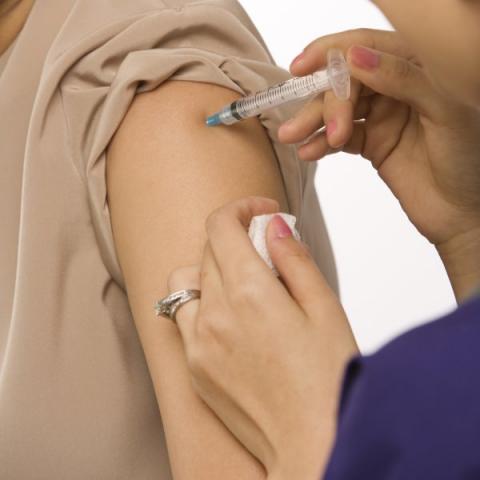Flu vaccination uptake increases by 20%

There has been a 20% increase overall in the uptake of the flu vaccine compared to this time last year, (56,000 more doses) according to the latest provisional figures, but there’s no room for complacency warns the Public Health Agency, PHA.
Now that the PHA’s seasonal flu vaccination programme is well underway, the rise in the numbers of people having the flu jab is encouraging across all the ‘at-risk’ groups, including over 65s (73% by November 30 compared to 67% for the same period last year – 18,000 more vaccines) and children and adults who have chronic medical conditions (75% this year compared to 56% last year – 40,000 more doses).
The uptake rate for pregnant women at November 30 2011 was 56% - exceeding the target set by the Department of Health Social Services and Public Safety of 40%.
The PHA is delighted at the increase in uptake rates and encourages anyone who is in an ‘at-risk’ group, particularly women who have just found out they are pregnant, who have not yet received their free flu jab to make an appointment with their GP.
Dr Richard Smithson, Consultant in Health Protection, PHA, said: “These excellent uptake rates reflect a greater awareness of the need to get the flu jab. This is partly due to increased media campaign activity driving the message ‘flu is more serious than you think’, and the efforts of GPs and nurses who have done a tremendous job in promoting the vaccination programme.
“I would ask them to continue their work and ask for an extra effort to promote the flu vaccine to pregnant women. I’m delighted to see so many women protecting themselves and their unborn babies as nearly 60% have already been vaccinated. However, I would encourage those who haven’t and are still thinking about it to get the vaccine as soon as possible. Also, if you have just found out you are pregnant, make an appointment to get the vaccine before the flu season starts. There is now a wealth of evidence to show that the vaccine is safe and effective at all stages of pregnancy.
“The PHA is delighted with this news, as it shows how well the vaccination programme has gone so far, but we can’t afford to be complacent. The PHA is still driving the message to at-risk groups that receiving the seasonal flu vaccine is the best way to protect yourself and others from getting the virus. It is great to see the public taking such a positive role in protecting their own health. If you are in an at-risk group or pregnant, get the vaccine now; it’s not too late.”
The earlier you get vaccinated the better as it takes the body about 10–14 days after the jab to develop antibodies. These will then protect you against the same or similar viruses if the body is exposed to them. The vaccine contains three strains of the flu virus, which are considered the most likely to be circulating this winter, including the H1N1 (swine flu) virus.
For more information on seasonal flu, go to www.fluawareni.info and follow us on Facebook and Twitter.
Contact the PHA Press Office on 028 9031 1611.
For more information about the flu vaccine for 2011/12, visit www.fluawareni.info or speak to your GP/nurse or member of staff at the antenatal clinic in your local Health and Social Care Trust.
At risk groups for flu include the following:
- Anyone aged 65 or over, even if they feel fit and healthy at the moment.
- Pregnant women (at any stage of pregnancy).
- Children and adults who have any of the following medical conditions:
- a chronic chest condition such as asthma;
- a chronic heart condition;
- chronic kidney disease;
- diabetes;
- lowered immunity due to disease or treatment such as steroids or cancer therapy;
- a chronic neurological condition such as stroke, multiple sclerosis or a condition that affects your nervous system, such as cerebral palsy;
- any other serious medical condition – check with your doctor if you are unsure.
- Children who have previously been admitted to hospital with a chest infection.
- Children attending schools for those with severe learning difficulties.
- Anyone living in a residential or nursing home.
- Main carers for elderly or disabled people.
